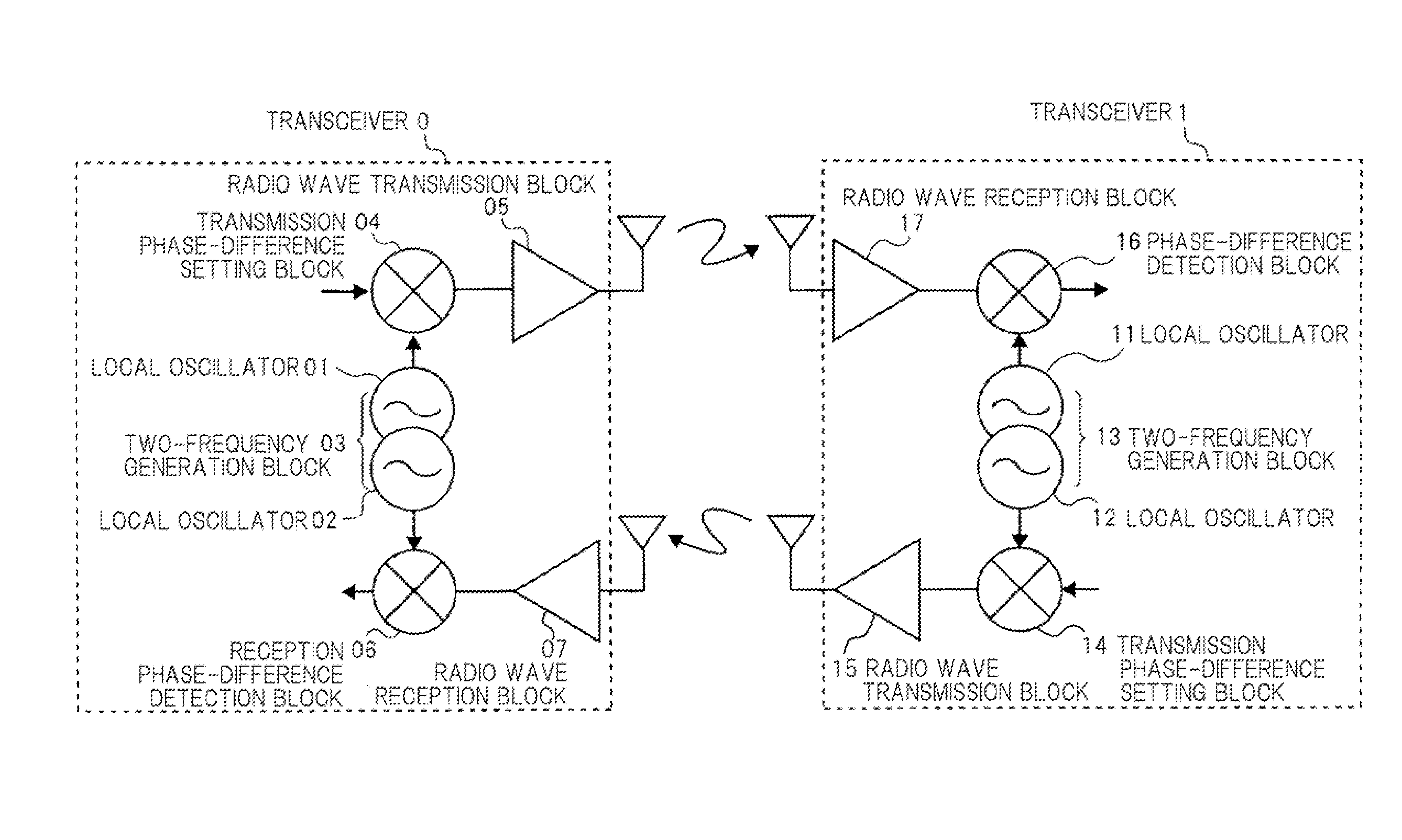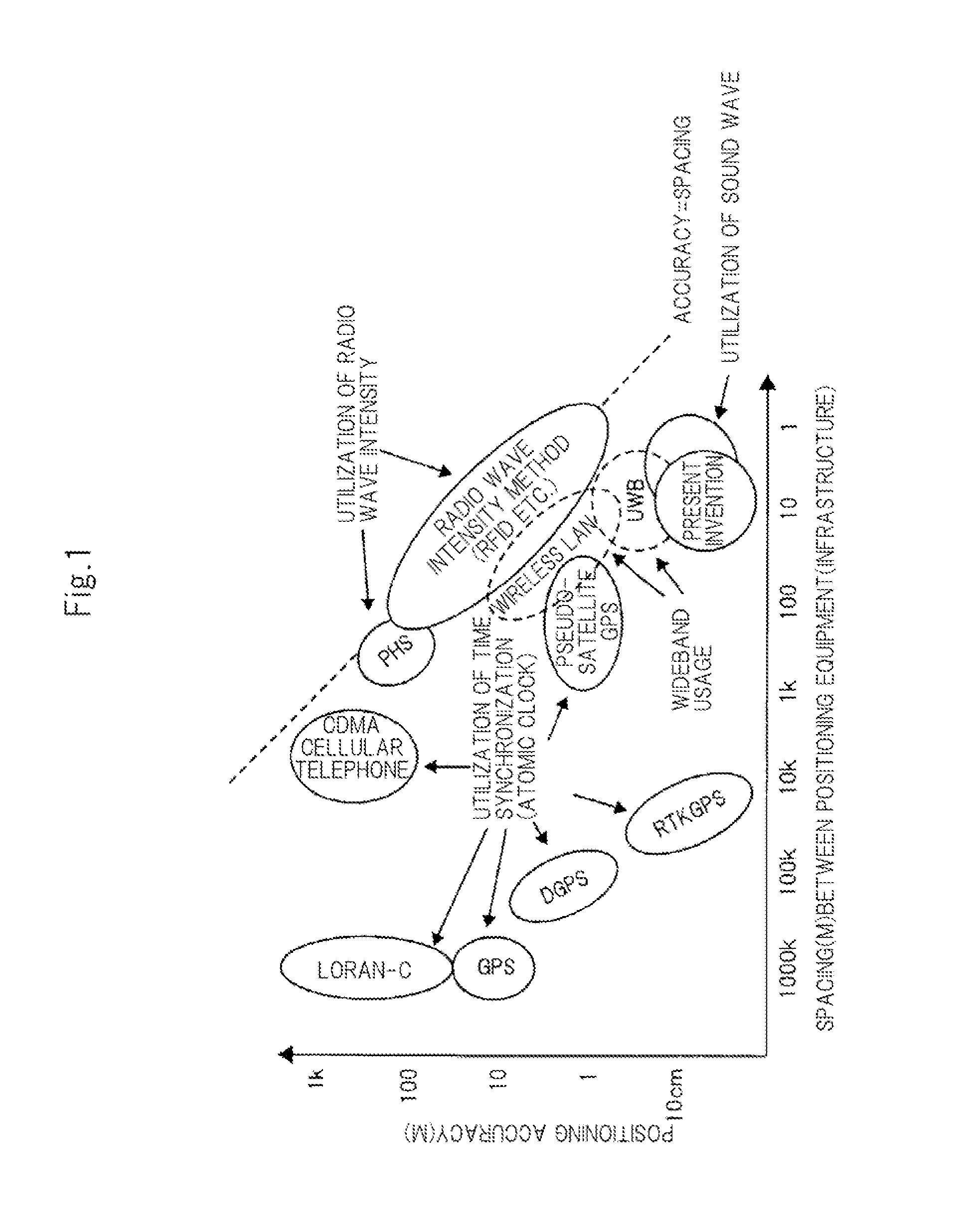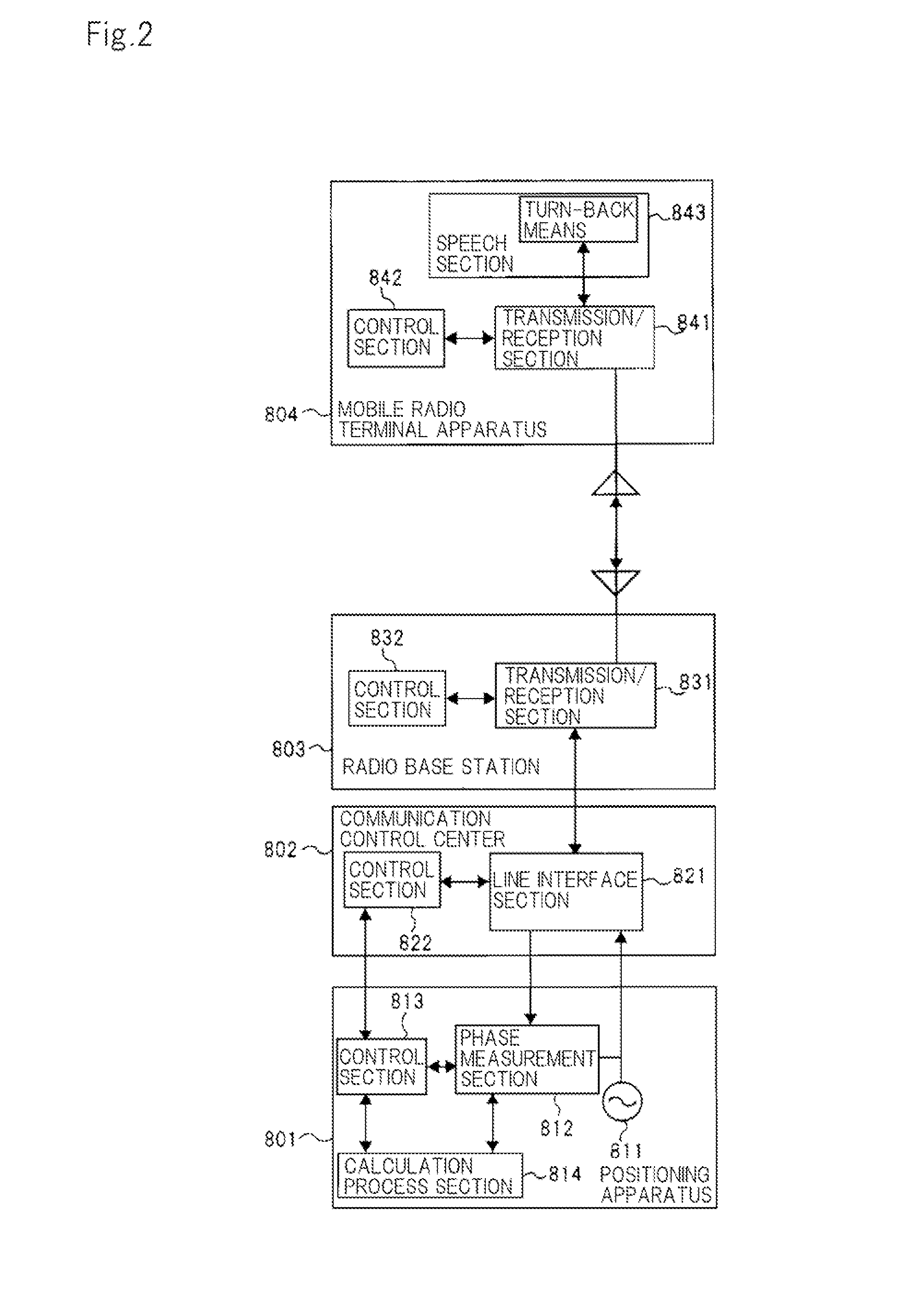Multiband transceiver and positioning system using the transceiver
a transceiver and multi-band technology, applied in direction finders, instruments, measurement devices, etc., can solve the problems of high equipment cost due to the use of atomic clocks, large power consumption in high-aware positioning and positioning without the aid of base stations, and difficulty in underground us
- Summary
- Abstract
- Description
- Claims
- Application Information
AI Technical Summary
Benefits of technology
Problems solved by technology
Method used
Image
Examples
first exemplary embodiment
[0089]FIG. 5 shows a first exemplary embodiment.
[0090]Two transceivers (TRX)0 and (TRX)1 respectively include radio wave transmission block 05, 15, radio wave reception block 07, 17, transmission phase-difference setting block 04, 14, reception phase-difference detection block 06, 16, and two-frequency generation block 03, 13. Two-frequency generation block 03 is made up of local oscillators 01 and 12, and two-frequency generation block 13 is made up of local oscillators 11 and 12.
[0091]At two-frequency generation block 03 of transceiver TRX0, local oscillator 01 and local oscillator 02 generate two frequencies which are in a relationship of 1-to-m (m is a rational number), and at two-frequency generation block 13 of transceiver TRX1, local oscillator 11 and local oscillator 12 generate two frequencies which are in a relationship of 1-to-m (m is a rational number).
[0092]At transmission phase-difference setting block 04 of transceiver TRX0, a phase difference between local oscillator...
second exemplary embodiment
[0114]FIG. 7 shows a second exemplary embodiment.
[0115]Suppose that the distance between transceiver TRX0 and transceiver TRX1 is L01, the distance between transceiver TRX0 and transceiver TRX2 is L02, and the distance between transceiver TRX1 and transceiver TRX2 is L12.
[0116]When a signal of phase φf0 and frequency ff is transported from transceiver TRX0, transceiver TRX2 receives the signal of this frequency ff and obtains phase φf2 of baseband signal as a reception result. At the same time, when a signal of phase φr1 and frequency fr is transported from transceiver TRX0, transceiver TRX2 receives the signal of this frequency fr and obtains phase φr2 of baseband signal as a reception result. Here, frequencies fr and ff are in the relationship of fr=m×ff.
[0117]Suppose the phase difference between the local oscillator of frequency ff of transceiver TRX0 and the local oscillator of frequency fr of transceiver TRX1 is Δφ01, the phase difference between the local oscillator of frequen...
example 1
[0120]FIG. 9 illustrates a first example of the present invention.
[0121]FIG. 9 is a circuit diagram to show the configuration of an example of the multiband transceiver used in the present invention.
[0122]The present example is made up of phase-setting device 601, phase calculator 617, cosine signal generator 603, mixers 603, 604, 618 and 619, adder 605, high-frequency amplifiers 606 and 620, reference signal source 608, frequency dividers 609, 611 and 613, switches 610 and 621, phase shifters 612 and 614, micro processor (MPU) 615, bandpass filters 622 and 624, and antenna 623.
[0123]When the multiband transceiver shown in FIG. 9 acts as transceiver TRX0 in the first exemplary embodiment, a phase in accordance with the signal indicating the phase instructed by microprocessor (MPU) 615 is set at phase-setting device 601. Cosine signal generator 602 and sine signal generator 607 generate a cosine signal and a sine signal in accordance with phases set at phase-setting device 601 and ou...
PUM
 Login to View More
Login to View More Abstract
Description
Claims
Application Information
 Login to View More
Login to View More - R&D
- Intellectual Property
- Life Sciences
- Materials
- Tech Scout
- Unparalleled Data Quality
- Higher Quality Content
- 60% Fewer Hallucinations
Browse by: Latest US Patents, China's latest patents, Technical Efficacy Thesaurus, Application Domain, Technology Topic, Popular Technical Reports.
© 2025 PatSnap. All rights reserved.Legal|Privacy policy|Modern Slavery Act Transparency Statement|Sitemap|About US| Contact US: help@patsnap.com



